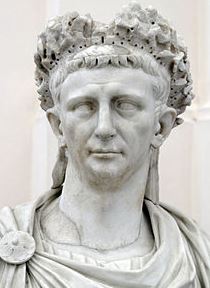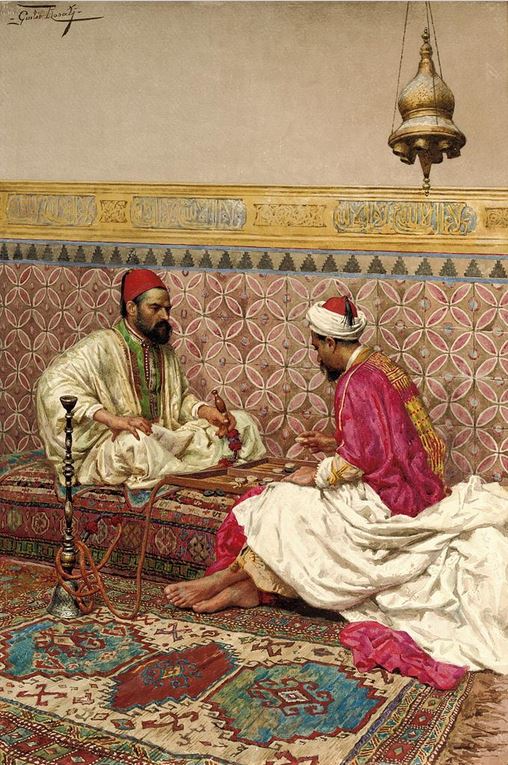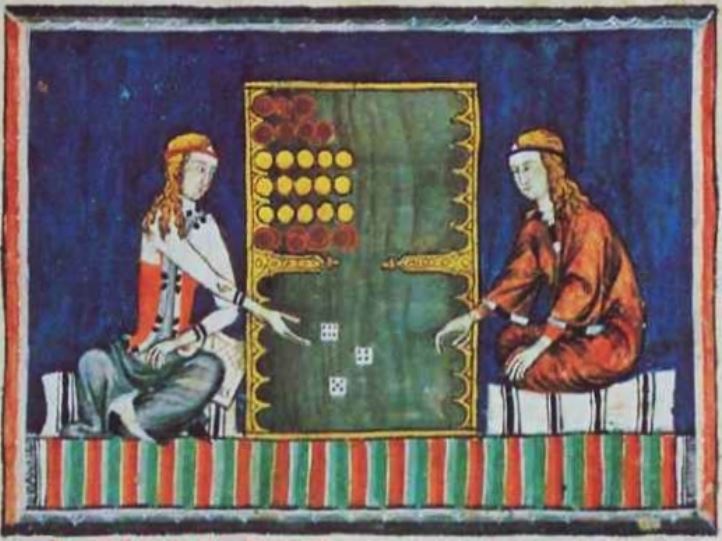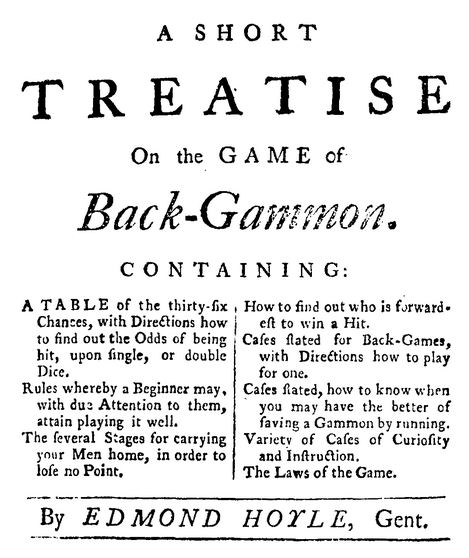Last updated on July 25, 2024
In this Deluxe Backgammon post, we take a deeper look into the history of backgammon and other associated table games by country.
Backgammon is one of the oldest known board games. The history of backgammon can be traced back around 5,000 years to archaeological finds in Mesopotamia (modern-day Iraq). It is an exciting two-player strategy game. Each player has fifteen checkers that move between twenty-four points on the board according to the roll of two dice. The objective of the game is to be first to bear off (move all fifteen checkers off the board).
Backgammon is a strategy game. However, there is an element of luck due to the randomness of the dice. While the dice may determine the outcome of a single game, the better player will accumulate a better record over the long run. The game relies on dice to determine movement. However, there is a large degree of strategy in deciding how to make the most effective moves given each dice roll as well as measuring the risk in terms of possible rolls the opponent may get in return. The optional use of a doubling cube allows players to raise the stakes during the game.
Roman Empire
Ludus Duodecim Scriptorum, or XII scripta, is an ancient Roman game, which combined elements of luck and strategy. It dates from around the first century AD. It is similar to modern backgammon, in that each player has 15 checkers, and the pieces stack and move on and off the board in a similar fashion. The name translates from Latin as “game of twelve markings”. This is probably referring to the three rows of 12 markings each found on most surviving boards. The game tabula is thought to be a descendant of this game. Very little information about specific gameplay has survived. The game was played using three cubic dice, and each player had 15 pieces. A possible “beginner’s board”, having spaces marked with letters, has suggested a possible path for the movement of pieces.
The earliest known mention of the game is in Ovid’s Ars Amatoria (The Art of Love) (written between 1 BC and 8 AD). An ancient example of the game was excavated at the archaeological site of Kibyra in southern Turkey. The three large rosettes or circles in the centre of the boards are thought to be markers where the players would put their coins that were being gambled on.
Tabula
Tabula (Byzantine Greek, meaning a plank or board), was a Greco-Roman board game. It was popular from the 2nd century AD. It is generally thought to be the direct ancestor of modern backgammon. The game was played on a board nearly identical to a modern backgammon board with 24 points, 12 on each side. Two players had 15 checkers each and moved them in opposing directions around the board. The movement was dictated according to the roll of three dice. A piece resting alone in a space on the board was vulnerable to being hit. Hitting a blot, re-entering a piece from the bar, and bearing off, all had the same rules as modern backgammon.
The game is thought to be a later refinement of Ludus Duodecim Scriptorum, with the board’s middle row of points removed, and only the two outer rows remaining. Our knowledge of the rules of Tabula comes primarily from records kept by Emperor Zeno in 480 CE. The Roman Emperor, Claudius was a fan of the game. He played tabula on long journeys in his chariot, custom-built with its own game set.
Byzantine Empire
Tabula meaning “table” or “board” in Byzantine Greek, is the oldest known game with rules similar to modern backgammon. The board was the same with 24 points, 12 on each side. As per modern backgammon, each player had 15 checkers and used cubical dice with sides numbered one to six. Hitting a blot, re-entering a piece from the bar, and bearing off, all followed the modern rules. The main differences with modern backgammon were the use of an extra die (three rather than two) and the starting of all checkers off the board. The checkers were entered in the same way that pieces on the bar enter in modern backgammon.
Egypt and Iraq
Race-type board games involving dice have existed for thousands of years in the Near East and Eastern Mediterranean. These included the game Senet of Ancient Egypt and the Royal Game of Ur in Babylon. Examples of the Senet have been excavated, along with illustrations, from Egyptian royal tombs dating to 3500 BC. Although it uses a board that is quite different from modern backgammon, it is widely considered to be a predecessor.
The Royal Game of Ur, originating in ancient Mesopotamia before 2600 BC, may also be an ancestor of modern-day table games like backgammon. It used tetrahedral dice. It is a two-player board game that was first played in ancient Mesopotamia during the early third millennium BC. The Game of Ur received its name because it was first rediscovered by the English archaeologist Sir Leonard Woolley during his excavations of the Royal Cemetery at Ur in the 1920s. The game was popular across the Middle East among people of all social strata. Boards for playing it have been found at locations as far away from Mesopotamia as Crete and Sri Lanka. The object of the game is to run the course of the board and bear all one’s pieces off before one’s opponent. Like modern backgammon, the game combines elements of both strategy and luck.
Persia (Iran)
In 2004, archaeologists uncovered an old board game in the 5000-year-old Persian city of Shahr-e Sukhteh (translated in Persian as “Burnt City”). This is widely considered to be the oldest version of backgammon ever discovered. Dated to 3000BC, the find consisted of a rectangular board made of ebony with sixty markers made from turquoise and agate and ancient bone dice. The board is decorated with an engraved serpent coiling around itself twenty times, producing 20 slots or “points” for the game, instead of the modern version’s 24.
Turkey
Tavla is the Turkish name for backgammon. The rules are similar but not exactly the same as Western backgammon. It is customary to call the dice rolls by their Persian number names, yek (1), dü (2), se (3), chahar (4), pange (5), sheesh (6). There is no doubling cube in Tavla.
There are several variants of Tavla, where the rules of play change significantly. The usual Tavla is also known as erkek tavlası meaning boys’ or men’s Tavla. The other variant kız tavlası (meaning girls’ Tavla) is a pure racing game that depends only on the dice and involves no strategy. There is another variant called asker tavlası (meaning soldiers’ Tavla) where the pieces are thrown to the board randomly and the opponents try to flip their checkers over their opponent’s checkers to beat them.
Greece
Backgammon is popular among the Greeks. It is a game in which Greeks usually tease their opponent and they create a lively atmosphere. The game is called “Tavli”, derived in Byzantine times from the Latin word “tabula”.
There are three variations of Tavli commonly played. Portes, which is very similar to Western backgammon. Plakoto, a game where one checker can trap another checker on the same point. Fevga, a game of Turkish origin where one checker by itself can block a point.
These games are played one after another, in matches of three, five, or seven points. Players use the same pair of dice in turns. After the first game, the winner of the previous game starts first. Each game counts as 1 point if the opponent has borne off at least 1 checker, otherwise 2 points (gammon/backgammon). There is no doubling cube.
East Asia
Backgammon was popular in China for a time and was known as “shuanglu”, with the book Pǔ Shuāng written during the Southern Song(1127–1279) period recording over ten variants. By the 13th century the board game Go, originally played only by the aristocracy, had become more popular among the general public.
In Japan, ban-sugoroku is thought to have been introduced from China in the sixth century. As a gambling game, it was made illegal several times. Ban-sugoroku plays identically to backgammon, except for the following differences. Doubles are not special. If a player rolls doubles, each die still counts only once. There is no “bearing off”. The goal is to move all of one’s men to within the last six spaces of the board. There is no doubling cube. Forming a six-prime in the home board with one or more of the opponent’s checker on the bar is an automatic win.
Western Europe
At one time the Roman Empire covered much of Europe and undoubtedly the local citizens must have been exposed to Tabula. However, the game we know as backgammon didn’t become popular until long after the empire had receded. The jeux de tables (Games of Tables), predecessors of modern backgammon, first appeared in France during the 11th Century. This was most likely a result of Knights and soldiers returning from the Crusades in the Middle East. Gambling games were so popular with the Christian soldiers in Richard the Lionheart’s army that he and his ally, Philip of France, were forced to issue a joint act during the Third Crusade in 1190. The act prohibited any person in the army beneath the degree of a knight from playing at any sort of game for money.
Tables games
Tric-Trac, a backgammon variant, soon became a favourite pastime of gamblers. In 1254, Louis IX issued a decree prohibiting his court officials and subjects from playing. Tables games were played in Germany in the 12th century and had reached Iceland by the 13th century. In Spain, the Alfonso X manuscript Libro de los juegos, completed in 1283, describes the rules for a number of dice and table games. By the 17th Century, tables games had spread to Sweden. A wooden board and checkers were recovered from the wreck of the Swedish warship Vasa among the belongings of the ship’s officers. Backgammon appears widely in paintings of this period. Examples include works by Frans Francken, Albert Friedrich Schröder, Theodoor Rombouts and Giulio Rosati.
It remained a favourite game of the upper classes in Europe throughout the Middle Ages. Tables spread from the upper classes throughout medieval society in Europe. Innkeepers attracted customers by providing them with boards, checkers and dice. Backgammon continued to be popular through all levels of society throughout the eighteenth and nineteenth centuries.
United Kingdom
In the sixteenth century, Elizabethan laws and church regulations prohibited playing tables. However, by the eighteenth-century backgammon was popular among the English clergy. Edmund Hoyle published A Short Treatise on the Game of Back-Gammon in 1743. This outlined the rules and strategy for the game.
In English, the word “backgammon” is most likely derived from “back” and Middle English “gamen”, meaning “game” or “play”. The earliest use documented by the Oxford English Dictionary was in 1650. There was a variant of the game known as Old English Backgammon that was popular in the UK up until the 1970s. There are two main differences between Old English Backgammon and Western backgammon. First, players are permitted to use part of your roll so as to not be able to use the rest of it. Second, there is a maximum of five checkers on a point.
United States
The most recent major development in backgammon was the addition of the doubling cube. It was first introduced in the 1920s in New York among members of gaming clubs in the Lower East Side. The name of the inventor of the cube remains unknown. However, whoever introduced the cube to backgammon, certainly transformed the game forever. The cube required players not only to select the best move in a given situation, but to also consider the probability of winning from that position.
The popularity of backgammon surged in the mid-1960s, mainly due to the efforts of Prince Alexis Obolensky. He became known as “The Father of Modern Backgammon”. “Obe”, as he was called by friends, co-founded the International Backgammon Association, which published a set of official rules. He also established the World Backgammon Club of Manhattan. In 1963, he developed a backgammon tournament system and then organised the first major international backgammon tournament in 1964. The tournament attracted royalty, celebrities and the press.
The game became hugely popular and was played on college campuses, at private members clubs and, of course, in the home. People young and old all across the country dusted off their boards and checkers. Cigarette, liquor and car companies began to sponsor tournaments and Hugh Hefner held backgammon parties at the Playboy Mansion. Backgammon clubs were formed and tournaments were held. The popularity of the game resulted in a World Championship event being held in Las Vegas in 1967.
Court case
In the United States, there has been controversy over backgammon and its association with gambling over the years. An example of this came in a court case in 1982. The State of Oregon argued that backgammon is a game of chance and therefore should be subject to the state-wide gambling laws.
The defendant in the case was Ted Barr, a backgammon tournament director. Barr’s attorney organised a defence based on the fact that backgammon is missing a critical element of gambling, the element of surprise. For example, blackjack betting is based on not knowing the dealer’s cards. In poker, you don’t know what your opponents are holding in their hands. Backgammon, on the other hand, is entirely transparent. The board is in front of you, and both players have the same information available. In addition, they have identical starting points.
The court ruled in Barr’s favour. It agreed that there was a difference between a game of skill and traditional casino games. Therefore, the conclusion was that he was not promoting illegal gambling.
Related content
Wikipedia backgammon history.





Backgammon has a long and fascinating history. If it can last 5000 years and still remain popular, it must have got a lot of things right. I love the fact that a backgammon game can swing back and forth many times during a single game due to the roll of the dice. Luck plays a big part, but ultimately success in backgammon revolves around understanding tactics and strategy. Thanks for the interesting post.